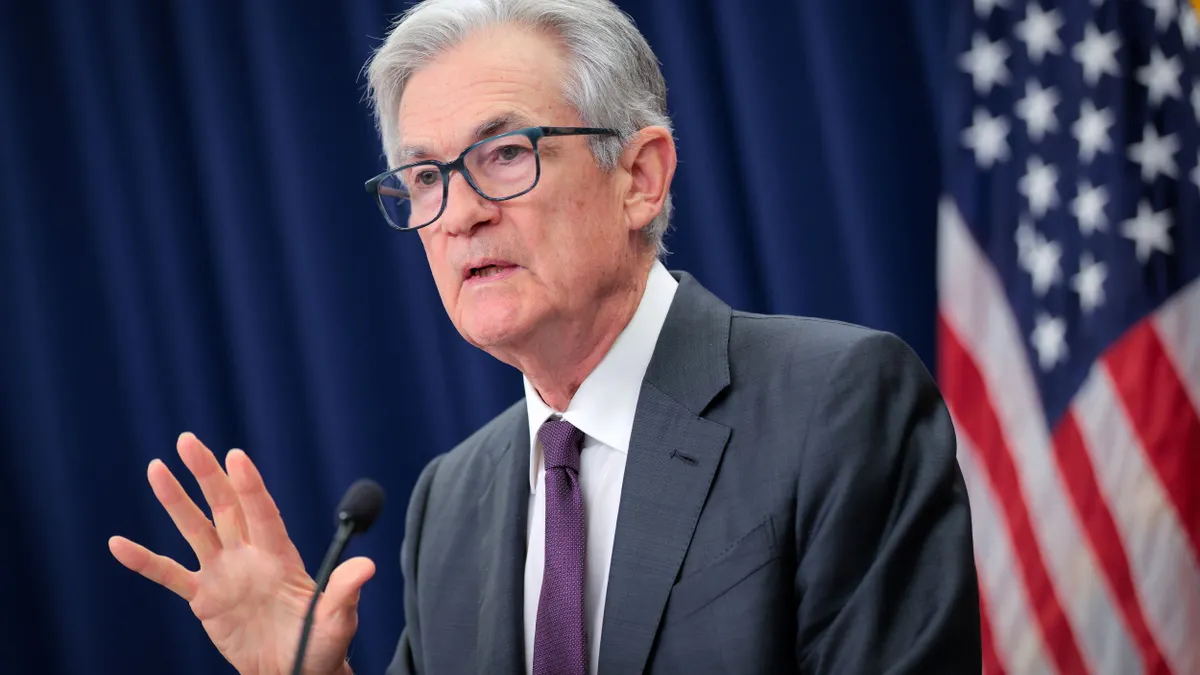Guillaume Poncin is the chief technology officer at San Francisco, California-based Alchemy, a blockchain developer platform provider. Views are the author’s own.
I recently watched a Fortune 500 CFO's face change when I showed her Circle's numbers: $1.7 billion in revenue last year from investing US Dollar Coin, or USDC, reserves. Coinbase took home nearly $1 billion just for distributing the fast-rising digital currency.
Combined, Circle and Coinbase are monetizing nearly $2 billion in customer float through U.S. Treasuries — the same strategy available to any company holding customer funds.
After hearing this, the CFO told me: “But we can't touch crypto. Compliance would never approve it.”
She was wrong. And she's not alone.
In early 2025, U.S. financial regulators dismantled the barriers that kept businesses from integrating digital assets. The OCC moved first in March, followed by the FDIC and Federal Reserve in April, collectively withdrawing guidance that had required advance approval for crypto activities. The implications extend far beyond banking: any company with robust compliance infrastructure, from payment processors to corporate treasuries, can now integrate digital assets without regulatory pre-approval.
In another pivotal moment for the cryptocurrency space, the Senate last month passed a bill aimed at creating a regulatory framework for the issuance of stablecoins. The legislation, dubbed the “Guiding and Establishing National Innovation for U.S. Stablecoins,” or GENIUS Act, still awaits House approval. The bill, if enacted, is expected to open the door for increased stablecoin adoption by providing much-needed regulatory clarity.
Digital assets have entered mainstream commerce. Corporate treasuries sitting on billions in cash reserves can now access stablecoin yields of 4%-5%, or they can issue their own stablecoin to capture far greater revenue.
Every day, companies leave money on the table. A consumer goods company pays foreign exchange fees that stablecoins eliminate. A software company pays a significant percentage of sales to payment processors, whereas crypto payments cost less than 1%. Meanwhile, stablecoin issuers are capturing billions from float revenue, which is why PayPal launched PYUSD and why stablecoins processed $35 trillion last year, more than twice Visa's volume.
The infrastructure already exists; companies just need to tap into it. BlackRock's tokenized money market fund BUIDL crossed $1.7 billion in assets simply by partnering with Securitize for tokenization and firms like Anchorage Digital and BitGo for custody. They didn't build blockchain infrastructure; they leveraged existing providers.
A practical framework
In light of these trends, the following are tips for corporate finance leaders interested in cryptocurrency adoption:
- Start with treasury optimization. For most CFOs, the entry point isn't trading — it's yield enhancement. Stablecoins backed by U.S. Treasuries offer institutional-grade security with superior returns. Companies can allocate a portion of cash reserves to regulated stablecoins to remain liquid while earning yield. The pending GENIUS Act will provide additional regulatory clarity for corporate adoption.
- Evaluate payment infrastructure. Digital assets excel where traditional payments fail: cross-border transactions, 24/7 settlement, and programmable payment logic. Manufacturing companies can settle international supplier payments instantly. SaaS platforms can enable global customer payments without currency conversion friction. Treasury teams can automate complex payment workflows through smart contracts.
- Explore digital asset revenue streams. For companies with customer-facing platforms, digital asset services represent new revenue streams. Asset managers can offer crypto index products. Payment processors can facilitate stablecoin transactions.
- Bridge to decentralized lending. Decentralized finance protocols offer a novel approach to capital markets because they enable lending and borrowing without traditional balance sheet risk. By facilitating access to these protocols, companies can expand offerings while earning fees on facilitated volume.
- Launch self-custodial wallets. Self-custodial technology is the foundation of a mature digital asset strategy because it enables fintechs and institutions to facilitate direct ownership while maintaining control over user experience. The business case for self-custody is clear. Within just a month of Robinhood’s announcement in September 2021 that it was testing a crypto wallet feature, the waiting list reached more than one million customers, according to a CNBC article. Revolut, meanwhile, saw its “wealth” business grow 300% last year, driven by increased crypto trading activity and the launch of its crypto exchange, per a Reuters report. Wallets provide the entry point to capture liquidity and strengthen user relationships.
- Deploy purpose-built infrastructure. For companies ready to own their infrastructure stack, purpose-built blockchains enable unparalleled control over transaction flow, compliance logic and fee capture.
Managing risk
Digital asset adoption doesn't mean abandoning risk management principles. Consider working with licensed custodians and established infrastructure providers as well as implementing clear governance policies. Also, start with a conservative approach. Begin with less volatile assets like stablecoins before exploring broader crypto exposure.
The arrival of sensible, clear-sighted regulation is a unique opportunity for corporate finance to assert leadership by leveraging the efficiency and accessibility of digital assets. The guardrails haven't disappeared — they’ve evolved to embrace the yield potential of cryptocurrencies and blockchain technology.












